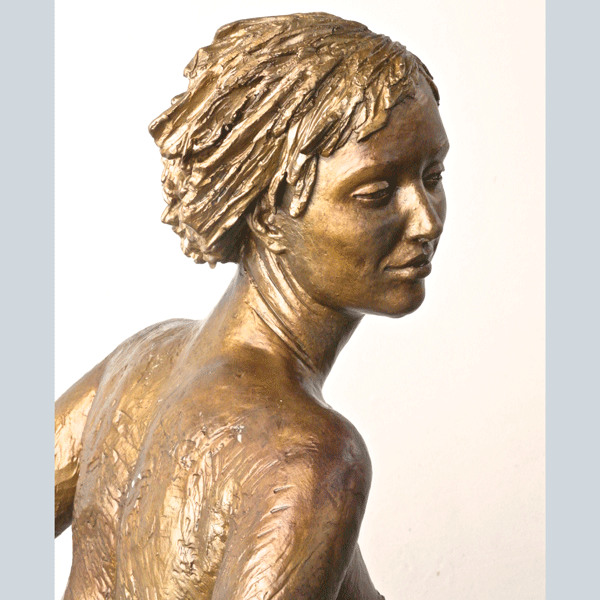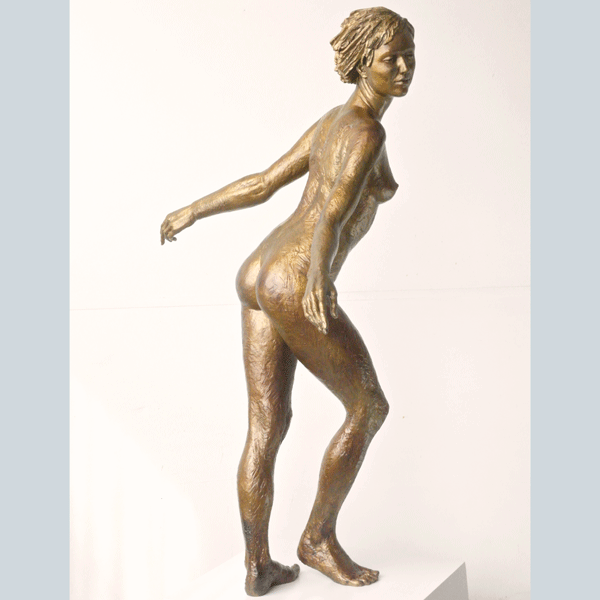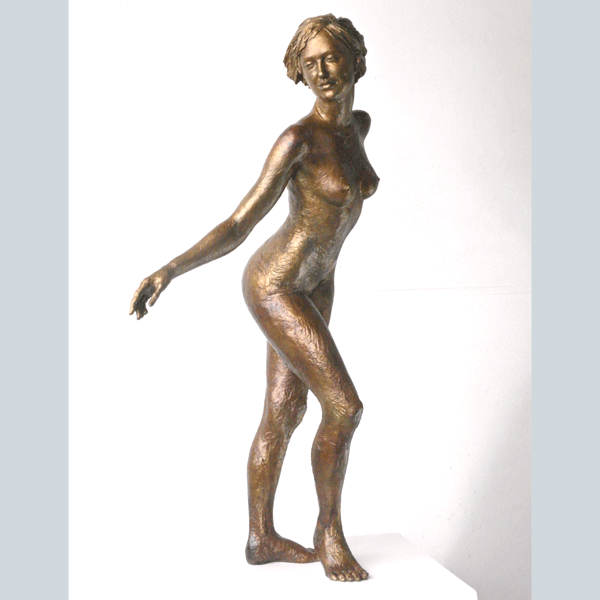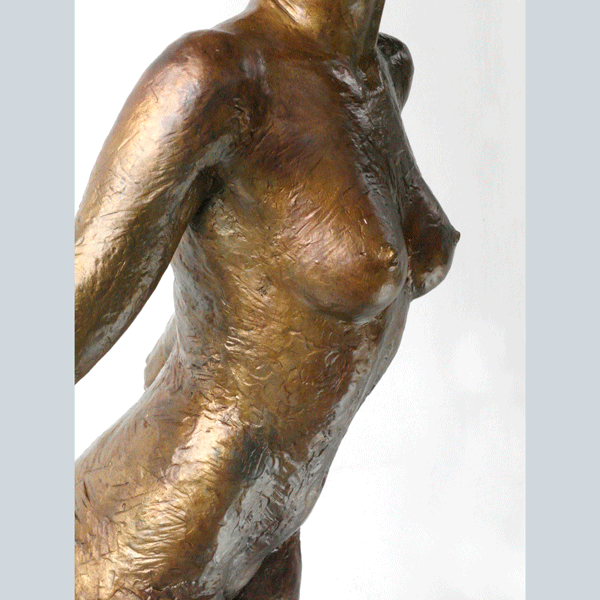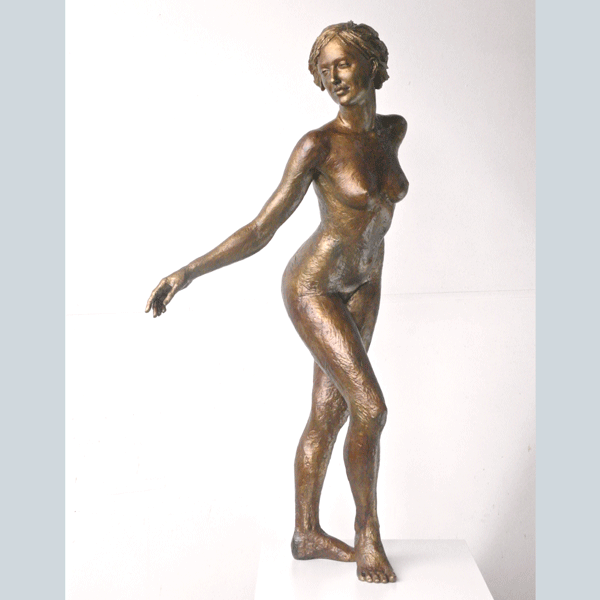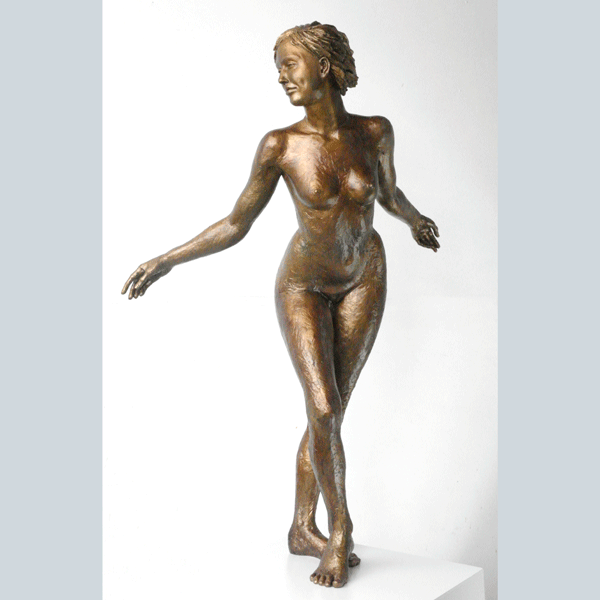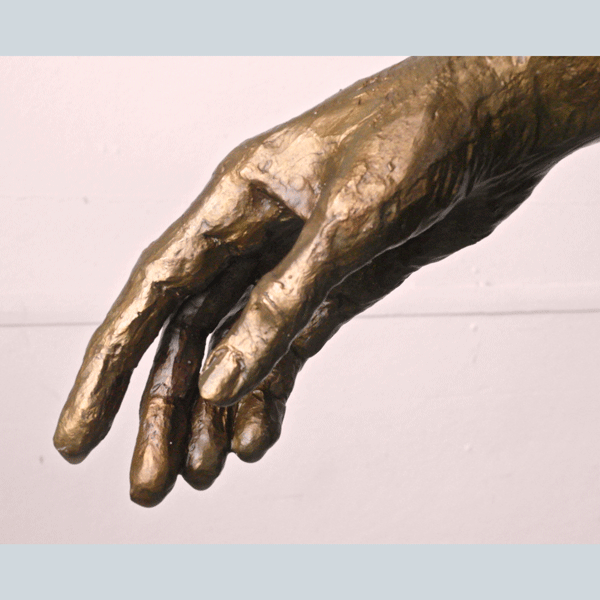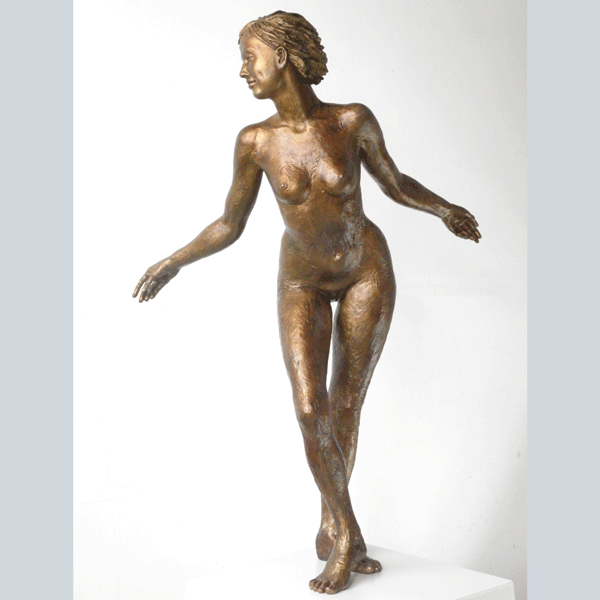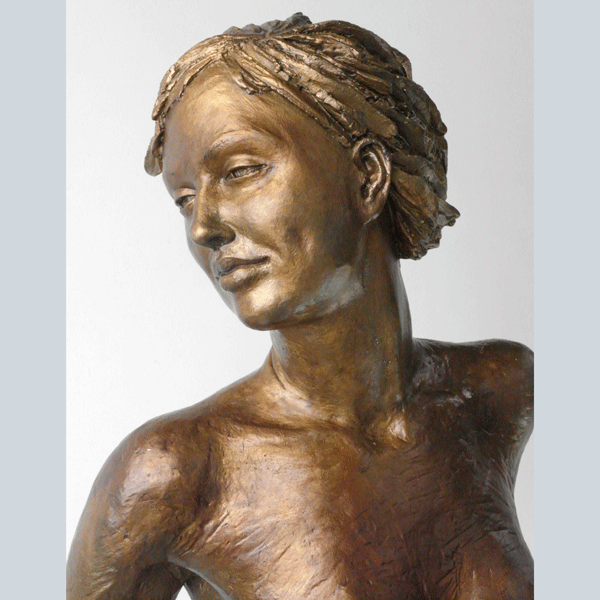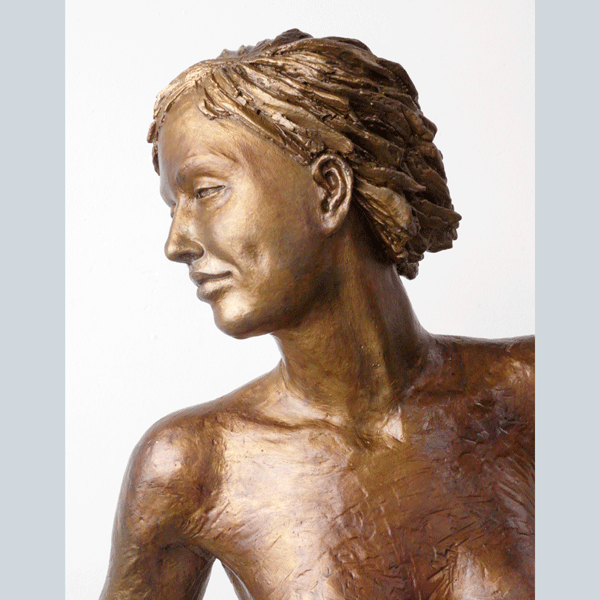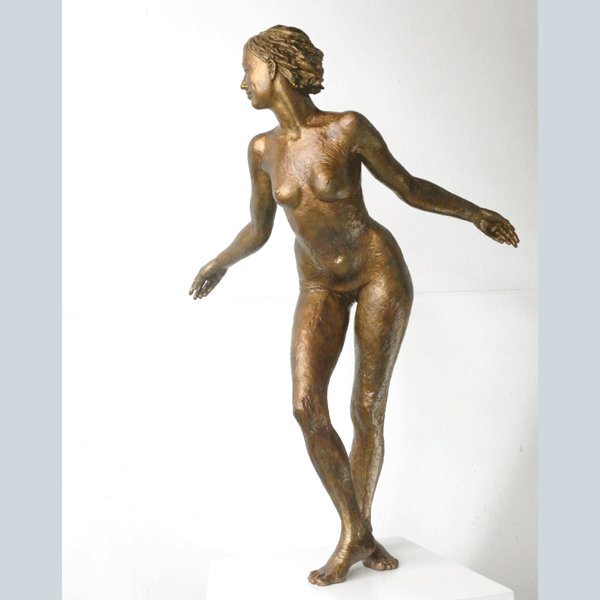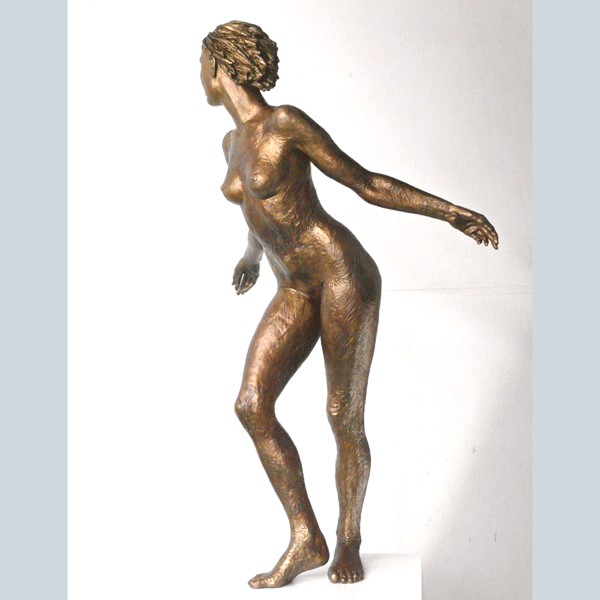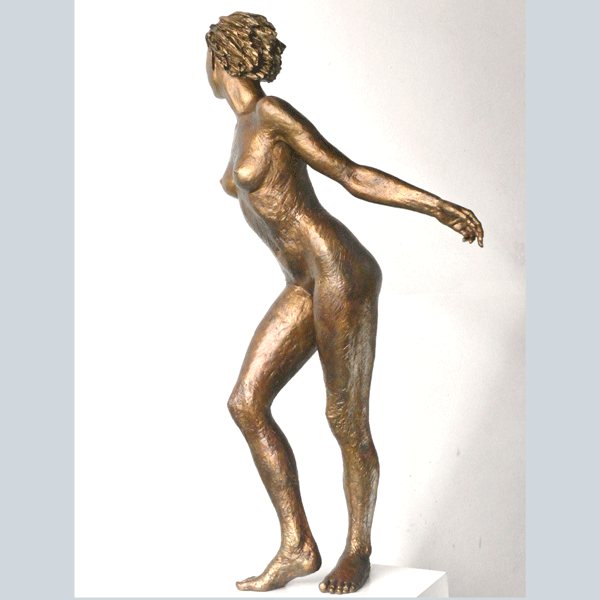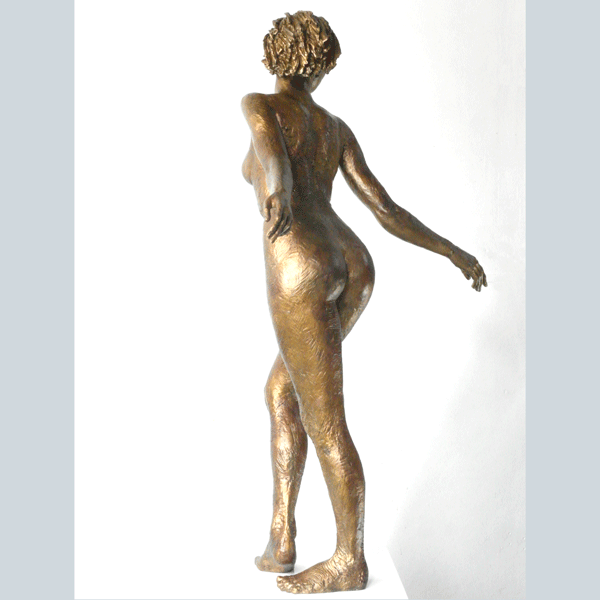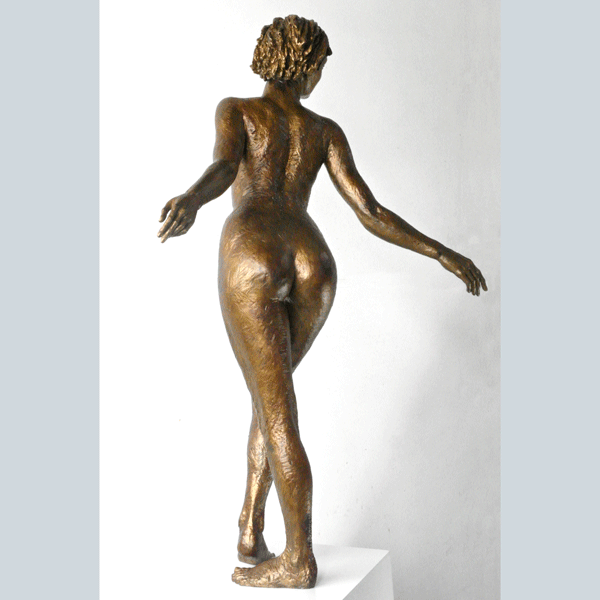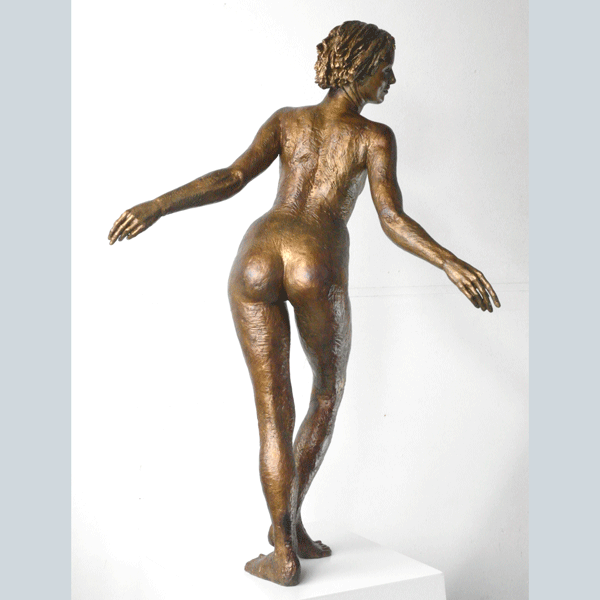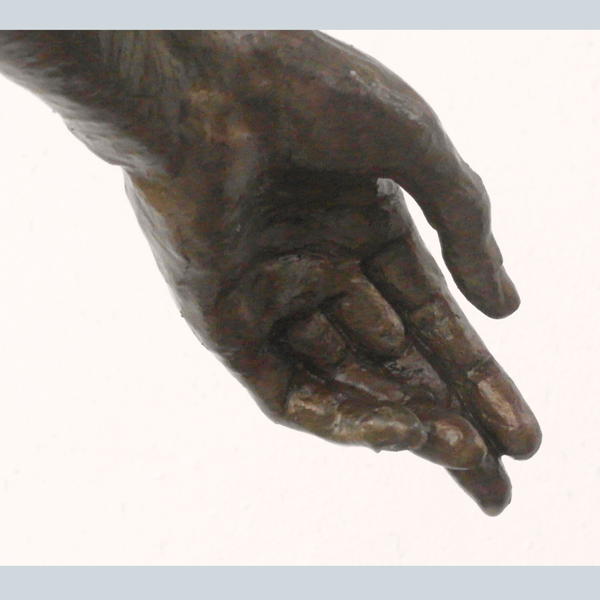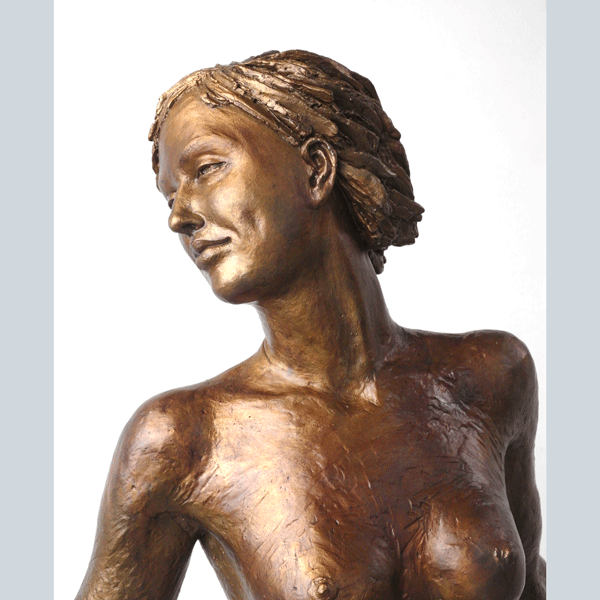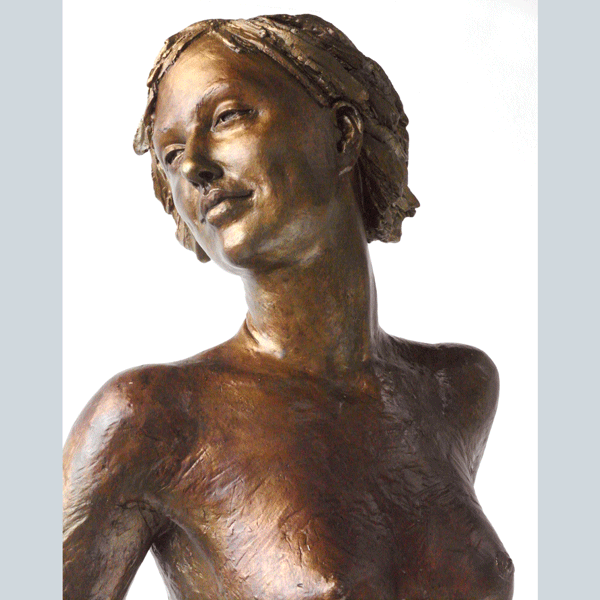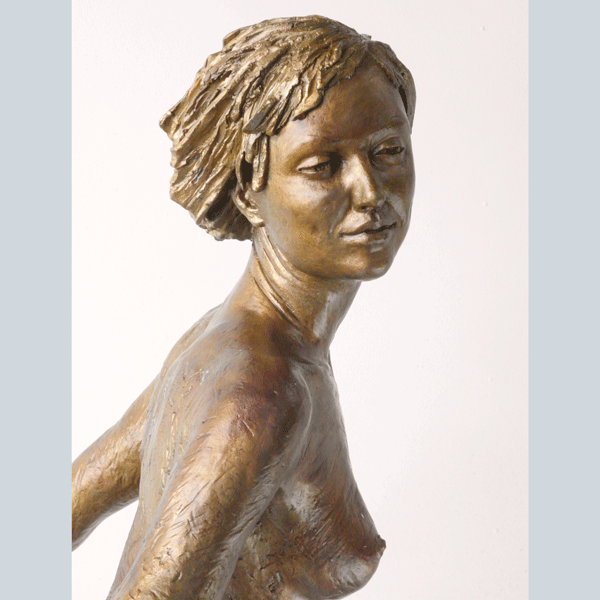Dominique
Sculpture by Meliesa Judge
Our twenty five year sculpture practice is coloured by the backdrop of our home country. The isolation of Australia, both physical and cultural is a duality, a coin with two faces.
One side is the colloquial, parochial, isolation of the visual arts in Australia, a cultural vacuum within which postmodernism has held a thirty year dominance. One the other hand, isolation can allow a strong mind to flourish, independent thought unimpeded by cultural mores, Here we need not be overshadowed, tempted to emulate other artists or to conform to a trend. Our exposure to the cultural heritage of the wider world is occasional, specific and gloriously selective.
We have just returned from a sculpture focussed journey to Europe. Seventy five days of intensive immersion in the galleries, museums and public art of several major cities. Both ancient world and contemporary, Renaissance and early modernism. The time zone of production is less important to me than the content I am searching for in the sculpture that I stand before. I seek a common thread of expression, humanity and exaltation, that sense of the human mind alive, searching for meaning within form. Sometimes I will find that essence in a forgotten fragment, the least looked at item in a museum, sometimes I meet it in a celebrated work, often I seek it in a famous contemporary sculpture but do not see it. The shared journey with my husband was fascinating because we each find value in different pieces, but the outstanding characteristics are the same; authenticity of material and intention, powerful expression, meaningful and accessible narrative.
We had three points of interest for this journey, satisfying our diverse interests; Michaelangelo, for me, took us to Rome and Florence, and therefore also to Bernini and to the explosion of figurative sculpture that was the Renaissance. More vitally it brought us to the fragments of ancient Rome and Greece that inspired and informed the hands of the masters.
The modernists brought us to Barcelona, the shell forms of Gaudi, his profound vision which, interrupted by civil war, did not carry strongly to subsequent generations. And we explored Amsterdam in the hope of finding an equivalent in public sculpture to their current innovations in architecture. In each city we actively sought out new and contemporary figurative sculpture in the public spaces of the city, beyond the museums and tourist traps.
Michaelangelo is breathtaking. His individualisation of the narrative is inspired. He retells familiar stories with a clarity and perspective that cuts straight to the essential humanity of the protagonists, regardless of the accepted conventions of the time. The execution of the sculptural idea through perfect line and precision, his understanding of the material, of perspective and of the human form, is profound and deeply evocative. His Pieta is a perfect example of the synthesis of mind and material. No single line is out of place even when he chose to distort the relative dimensions of the two figures. The dialogue about grief, loss, death, beauty, divine humanity is distilled into the simple stillness of the figures. There is no melodrama or squirming cherubs. The Christ body is completely lifeless, and the mother transformed, bewildered and transfixed by grief. No expectation of an afterlife.
I spent an hour writing notes in front of the Pieta, in St Peters Basilica, while a huge crowd surged behind me, hundreds of people all armed with their cameras, snap and leave, pausing for just as long as it takes to aim the device and flash, before moving on. When I eventually surface from my immersion in Michaelangelo’s marble, as subtle as flesh, I notice the jittery crowd again and wonder, bemused why they are there at all.
A camera will not see what you yourself will not look at with your own naked eyes. A camera reduces the three dimensional world to flat and reproduces it to the size of the screen you are looking at. It is a poor representation of reality, a notetaker, a tool. Our naked eyes appreciate depth, colour, contrast and texture so finely, so minutely that given an hour up close to a marble that Michaelangelo turned his own hand to, you will start to experience his own understanding of the voluptuousness of form, the subtleness of a single curve or undulation. You will start to experience his thought within your own mind. If ever given the opportunity to then run your hands over such a piece, the experience of embodied mind would carry even further.
We have come home to our fabulously quiet studio in the town that is belligerently blind to our art form. All the tools lie quiet and expectant in their shelves, the bronze ingots and clay bags stacked, their blunt forms ignorant of the shapes they are to become, the wax pots full, the armatures bent to shape and figures, blocked out before we left, rich with promise. There are ongoing editions to cast while the winter is with us, process work to pay the rent. But the real work is the new sculptures we are separately working on; mine a commission for the most enlightened people I know, and Will’s, a complex dynamic sculpture for exhibition. Both projects share a common thread. The most beautiful, most powerful act as a human being on this planet. Art for art’s sake.
Extracts from the Artist's Notebook. Aug 2013
